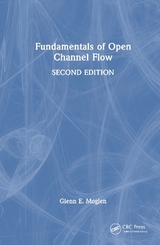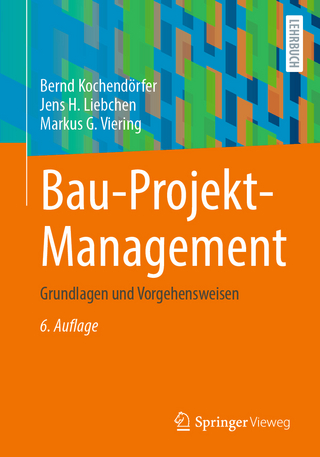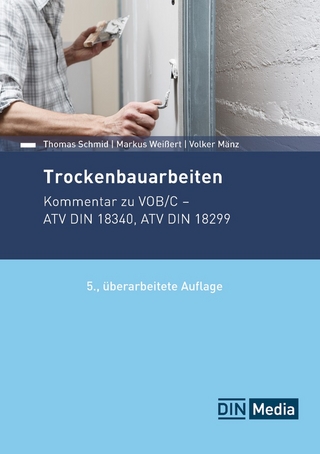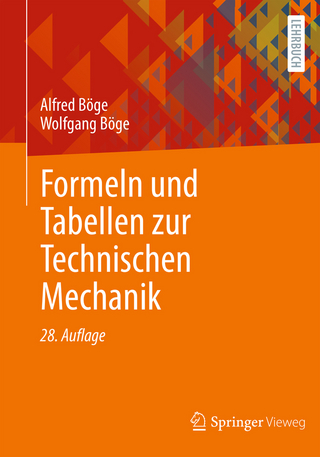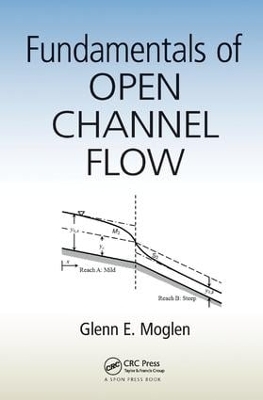
Fundamentals of Open Channel Flow
Seiten
2017
CRC Press (Verlag)
978-1-138-44081-4 (ISBN)
CRC Press (Verlag)
978-1-138-44081-4 (ISBN)
- Titel erscheint in neuer Auflage
- Artikel merken
Zu diesem Artikel existiert eine Nachauflage
Exposes You to Current Industry-Standard Tools
Open channel flow is covered in essentially all civil and environmental engineering programs, usually by final-year undergraduate or graduate students studying water resources.
Fundamentals of Open Channel Flow outlines current theory along with clear and fully solved examples that illustrate the concepts and are geared to a first course in open channel flow. It highlights the practical computational tools students can use to solve problems, such as spreadsheet applications and the HEC-RAS program. It assumes a foundation in fluid mechanics, then adopts a deliberately logical sequence through energy, momentum, friction, gradually varied flow (first qualitative, then quantitative), and the basics of sediment transport.
Taps into Your Innate Ability to Understand Complex Concepts Visually
Open channel flow can be understood through just a few simple equations, graphs, and computational tools. For students, the book comes with downloadable animations that illustrate basic concepts visually with synchronous graphical presentation of fundamental relationships. For instructors, PowerPoint slides and solutions to end-of-chapter problems are provided.
Delivers simple but powerful software animations
Conveys material in three ways (analytical, graphical, computational/empirical) to aid multiple types of learners and improve overall accessibility
Includes new fundamental equation for alternate depths
Discusses flow transients supported by animations and calculations
Emphasizes applications of common and useful computational tools
Developed by an author who has been teaching open channel flow to university students for the past fifteen years, Fundamentals of Open Channel Flow provides you with a detailed explanation of the basics of open channel flow using examples and animation, and offers expert guidance on the practical application of graphical and computational tools.
Open channel flow is covered in essentially all civil and environmental engineering programs, usually by final-year undergraduate or graduate students studying water resources.
Fundamentals of Open Channel Flow outlines current theory along with clear and fully solved examples that illustrate the concepts and are geared to a first course in open channel flow. It highlights the practical computational tools students can use to solve problems, such as spreadsheet applications and the HEC-RAS program. It assumes a foundation in fluid mechanics, then adopts a deliberately logical sequence through energy, momentum, friction, gradually varied flow (first qualitative, then quantitative), and the basics of sediment transport.
Taps into Your Innate Ability to Understand Complex Concepts Visually
Open channel flow can be understood through just a few simple equations, graphs, and computational tools. For students, the book comes with downloadable animations that illustrate basic concepts visually with synchronous graphical presentation of fundamental relationships. For instructors, PowerPoint slides and solutions to end-of-chapter problems are provided.
Delivers simple but powerful software animations
Conveys material in three ways (analytical, graphical, computational/empirical) to aid multiple types of learners and improve overall accessibility
Includes new fundamental equation for alternate depths
Discusses flow transients supported by animations and calculations
Emphasizes applications of common and useful computational tools
Developed by an author who has been teaching open channel flow to university students for the past fifteen years, Fundamentals of Open Channel Flow provides you with a detailed explanation of the basics of open channel flow using examples and animation, and offers expert guidance on the practical application of graphical and computational tools.
Glenn Moglen is a Research Hydrologist and Research Leader for the Hydrology and Remote Sensing Laboratory (HRSL) of the Agricultural Research Service. He was formerly Professor at Virginia Tech and Director of the Occoquan Laboratory in Manassas, Virginia, USA. He has also worked as a Research Hydrologist at the National Weather Service, as an Assistant and Associate Professor at the University of Maryland, and as a Visiting Hydrologist at the U.S. Geological Survey.
Introductory Material. Energy. Momentum. Friction and Uniform Flow. Qualitative Gradually Varied Flow. Quantitative Gradually Varied Flow. Fundamentals of Sediment Transport. References. Problems. Appendix.
| Erscheinungsdatum | 05.09.2017 |
|---|---|
| Zusatzinfo | 25 Tables, black and white; 103 Illustrations, black and white |
| Verlagsort | London |
| Sprache | englisch |
| Maße | 156 x 234 mm |
| Gewicht | 453 g |
| Themenwelt | Technik ► Bauwesen |
| Technik ► Umwelttechnik / Biotechnologie | |
| ISBN-10 | 1-138-44081-7 / 1138440817 |
| ISBN-13 | 978-1-138-44081-4 / 9781138440814 |
| Zustand | Neuware |
| Informationen gemäß Produktsicherheitsverordnung (GPSR) | |
| Haben Sie eine Frage zum Produkt? |
Mehr entdecken
aus dem Bereich
aus dem Bereich
Grundlagen und Vorgehensweisen
Buch | Softcover (2021)
Springer Fachmedien Wiesbaden GmbH (Verlag)
37,99 €
Kommentar zu VOB/C ATV DIN 18340, ATV DIN 18299
Buch | Softcover (2024)
DIN Media (Verlag)
69,00 €
Buch | Softcover (2024)
Springer Vieweg (Verlag)
18,99 €
